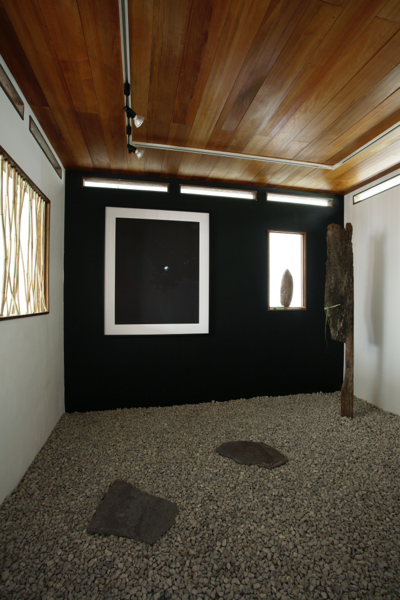漕 Kogi

月の径(一)
歴史と共に絶滅していった動物たちが数多くいたように、湖上の風景にもその姿を幾度と変え、生まれては消え去っていった舟たちの姿があった。
「琵琶湖」と呼ばれる内なる海。そこに物語を見た。
今は物語。しかし、時が江戸時代の頃では日常の光景ではなかったか。「淡海録」によると1689年頃、琵琶湖には1348隻もの丸小船が往き来していたという。その浮かぶ姿は時折波の大きな海とはちがい、湖特有の静かなものとなり、見る人は浮世絵図のようにも眺めたという。
時は流れ、2007年の今、湖面にはその面影を持つ舟はもはやただの一隻も見ることがない。
まわりに残されたのは、ごくわずかな資料的な舟の断片と描かれた絵図の中に浮かぶ帆舟の姿である。
この世の中でその役割を終えたものとは不思議なもので、姿を消してからは物語の中へと居場所を移してゆくのが常である。かつてのニホンオオカミのように。
僕は進路をかつての湖上へと向けた。姿を消した舟に乗って。
2007年4月
津田直
(『漕』序文より)
Like many animals which had become extinct along the history, the view on the lake had changed itself many times as well, with boats emerging and disappearing.
The inner sea called “Lake Biwa” is where I found my story.
It has become a tale now. It was, however, perhaps an ordinary scene in the Edo period. According to “Omi-Roku,” the old record about Lake Biwa, 1348 marukobune boats are said to have passed to and fro on the surface of the lake around the year 1689.
The appearance of the boats sailing on the lake, once in a while being quite distinguishable from that on big waves of an ocean, was very calm as was characteristic of the lake boat, and people looked at the scene as though it was a picture from Ukiyoe paintings.
Time has elapsed and now in the year of 2011, not a single boat having resemblances of the past is in sight.
Merely a few fragments of the boat for display purposes and a drawing of the boat sailing are the only remains in the area.
Strangely enough, after completing the assigned lifetime role, works of nature seem to find their ways to exist inside a tale. As with ancient Japanese wolves…
I directed my course towards the ancient lake. Aboard a vanished boat…
April, 2007
TSUDA Nao
(From preface of Kogi)
















